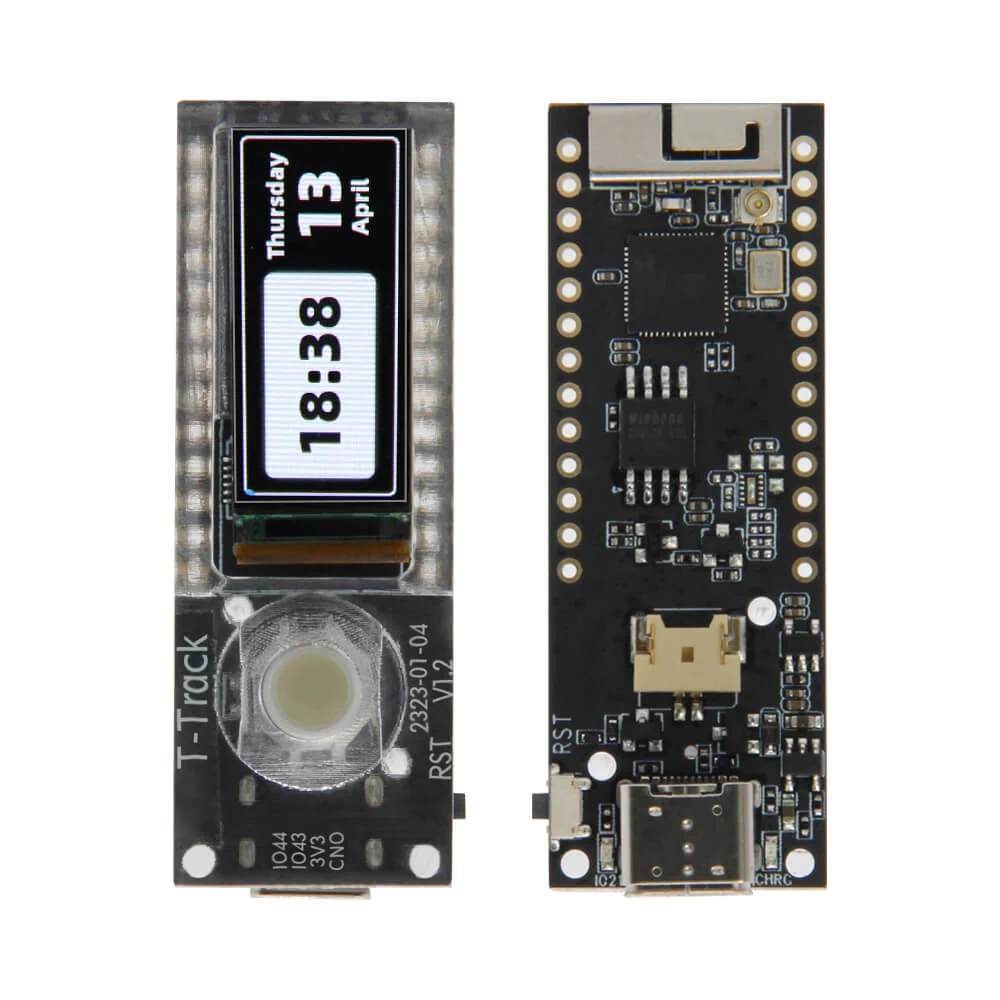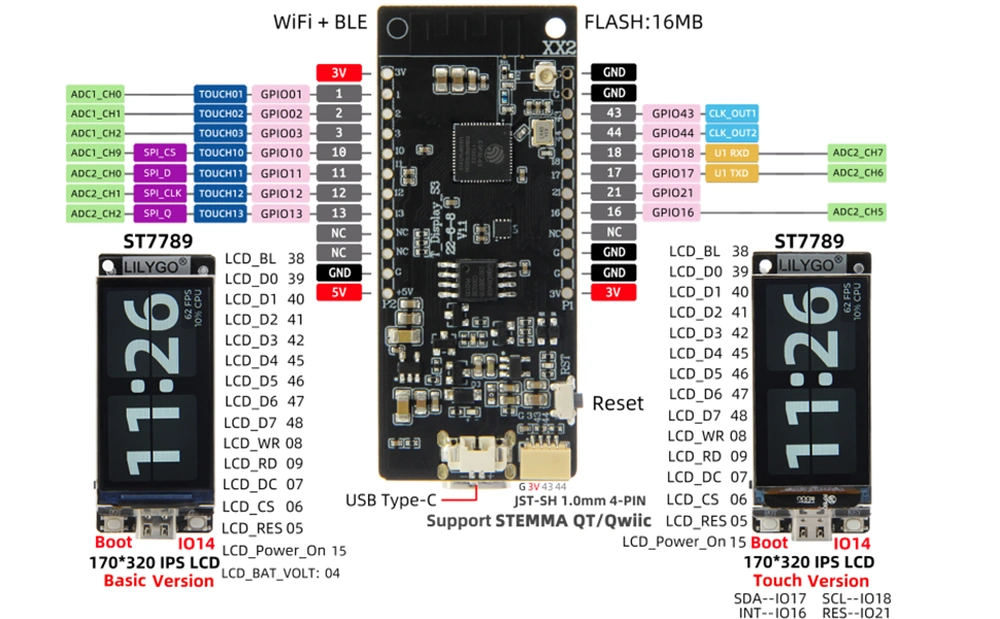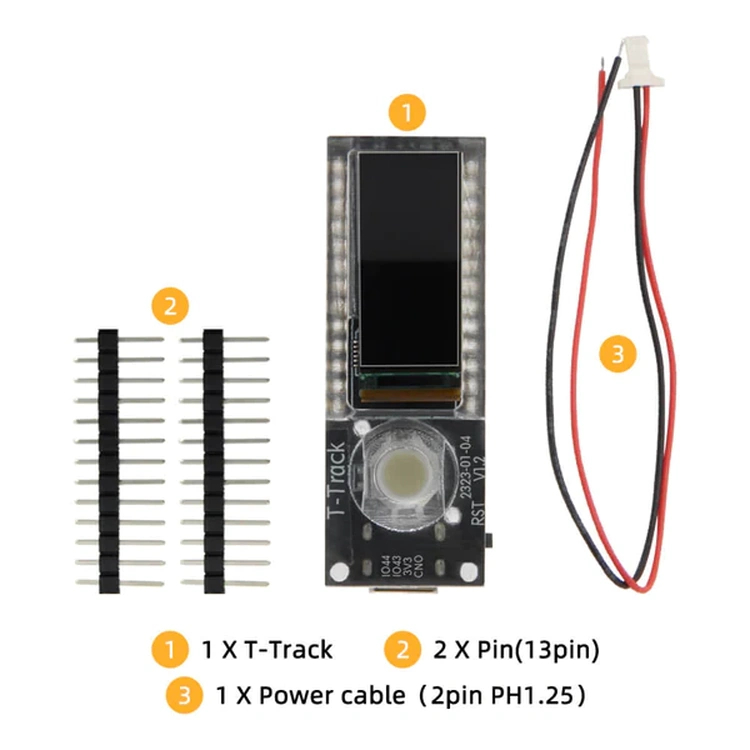
Table of Contents
Introduction
A new board caught my eye the other day over on cnx-softare.com. It’s called the LILYGO T-Track, this board sports an ESP32-S3, 1.1-inch AMOLED display, and a trackball that allows the user to navigate and interact with anything shown on the display by pressing down on the trackball as you would a button.
Confession
Anyone who has followed the projects around here may have guessed by now that I really, REALLY miss my old BlackBerry smartphone. Every time I accidently hit a button with my face while talking, or launch God knows what app when I try to do something while my phone in my hand, most of all when I’m getting my dog into or out of my pickup and I wind up accidently calling 911!
I long for the days U had my trusty CrackBerry with its physical buttons, QWERTY keyboard, and most of all either a trackball or trackpad. — I swear I went out with a woman who could type 120 words-per-minute one handed without looking at the thing. — So, I may not be the most objective person when it comes to these things. But rest assured whenever something like this hits the market, sooner or later I’ll be ordering one and even before that it’ll get a writeup here.
The LILYGO T-Track specs
- Microcontroller: ESP32-S3R8 Dual-core LX7 microprocessor
- Operating Voltage: 5V (2-pin header for LiPo)
- Input Voltage: 5V (via USB-C)
- Digital I/O Pins: 18 (4-pin STEMMA QT: 3.3V, 2x GPIOs (IO43, IO44))
- PWM Channels: 7
- Analog Input Pins: 10
- Flash Memory: 16MB
- SRAM: 512KB (PSRAM: 8MB)
- Clock Speed: 240 MHz
- Dimensions – 57 x 20 x 15mm
- Interface:
- Trackball (Also boot button when pressed)
- Reset button
- Red charging LED
- Green user LED
- Display: 1″x.49″ AMOLED
- Networking:
- 2.4 GHz 802.11 b/g/n Wi-Fi 4 with 40 MHz bandwidth support
- Bluetooth Low Energy (BLE) 5.0 connectivity with long-range support, up to 2Mbps data rate.
- 3D antenna and external u.FL antenna support (selectable with 0 Ohm resistor, see schematics)
- USB – 1x USB Type-C port for power and programming
LILYGO T-Track pinout

Digital IO Pins
The LILYGO T-Track has 18 digital input/output pins that can be used for a range of applications, such as controlling LEDs, reading sensors, and communicating with other devices. Of the 18 pins, 7 provide PWM output, which is useful for controlling the brightness of LEDs, controlling servos, or the speed of motors.
Analog Input Pins
The LILYGO T-Track has 10 analog input pins, which can be used to read analog sensors such as temperature sensors, light sensors, and potentiometers. These analog input pins have a resolution of 10 bits, which means they can detect 1024 different levels of analog input.

Communication Interfaces
The LILYGO T-Track has the trackball which also doubles as the boot button when depressed at startup, otherwise it is used to select items from the display similar to the left mouse button. There is also a reset button, along with red and green LEDs to notify of the batteries charging state.
Networking
The LILYGO T-Track has a 2.4 GHz 802.11 b/g/n Wi-Fi 4 with 40 MHz bandwidth support, Bluetooth Low Energy (BLE) 5.0 connectivity with long-range support, up to 2Mbps data rate. 3D antenna and external u.FL antenna support (selectable with 0 Ohm resistor, see schematics), USB – 1x USB Type-C port for power and programming.
Memory
The LILYGO T-Track has 16MB of onboard Flash memory which is where programming code is stored. It has 512kb of SRAM along with 8MB of PSRAM.
Power
The LILYGO T-Track uses 5V power via the USB-C port or alternatively via an optional onboard LiPo battery.

Compatability
The LILYGO T-Track can be programmed with any of the following: Arduino IDE, PlatformlO-IDE, or Micropython.
Conclusion
I may just be a sucker for a trackball, but I can’t wait to get my hands on one of these little badboys! If and when they become available on Amazon and if you’d care to help the site out, I’ll provide a sponsored link, (since we both know the odds of me remembering are functionally zero but still…) here’s a link to the LILYGO website.
Related
We have a handy table where you can compare different microcontroller boards to find the one that is just right for your project here, our rundown of the Arduino Pro Micro can be found here, and you can see all of the microcontroller boards we have covered so far here.
